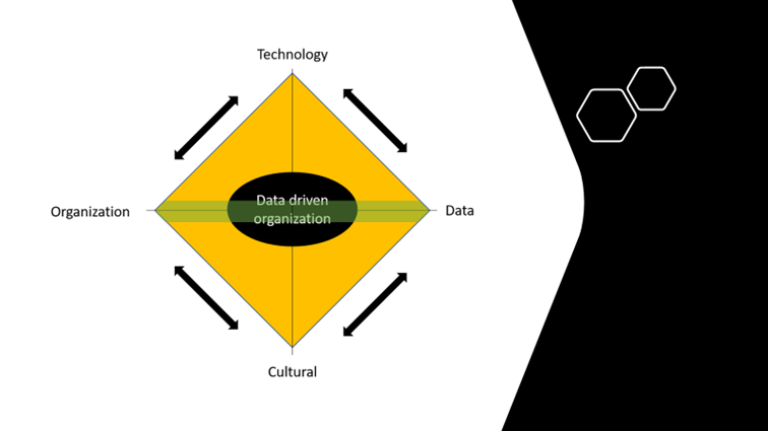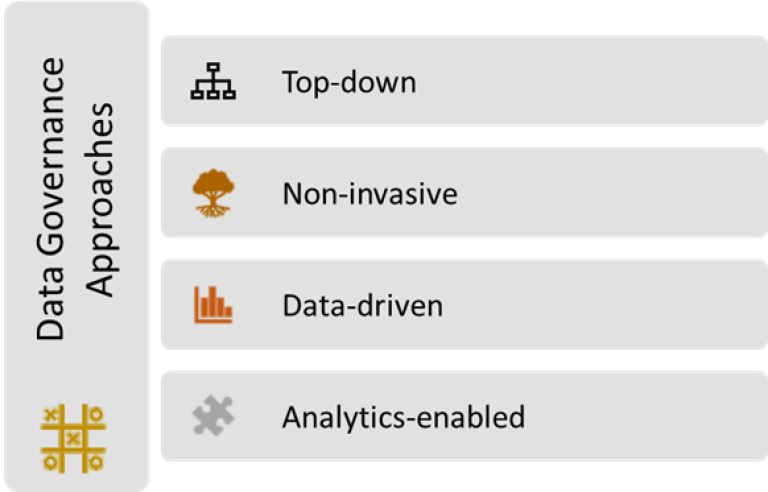How do you get your ducks in a row?
How can you be well prepared or well organized for your data journey to happen?
To succeed as a data-driven organization, there are two transformations that need to take place:

- You want to define your company’s data needs
- You need to choose an approach for how to govern this data that can become a lasting change for your organization
This is part four in a series of articles about data driven organization.
First article - How to operate a data-driven organization
Second article - How to choose the right technology
Third article - How to create a data-driven culture
From Business Model alignment to Data Governance
Any digital transformation towards a data-driven organization should necessarily entail an adjustment, if not transformation, of the business model, organizational structure, and processes. This will happen naturally by introducing the two elements of change: A data-driven business model and a sustainable data governance approach.
Setting up the organization for success, implementing rules, metrics and accountability, and guidance throughout the journey are the key objectives. This establishes a need for a Data Governance function, that is defined as “the exercise of authority and control (planning, monitoring, and enforcement) over the management of data assets.” [1]

To ensure business buy-in, continuity, and a holistic notion of data as an asset to the company, the business model needs to be updated accordingly. Firstly, an organization needs to define their data-driven business model, consisting of the building blocks to define data and data processing. Secondly, to operate towards the data-driven business, an effective data governance approach should be chosen.
Building blocks for a data-driven business model
“More information produces not more clarity, but more confusion.” [2]
It is crucial to identify what data provides value and how to analyze data in a structured way. You need to know what you want to achieve with the data you collect. According to research done by the University of Cambridge, a company that aims for a data-driven change of their Business Model, should answer the following six questions [3]:

The answers to these questions should indicate how to align data with your business model and what data to analyze. Based on this information the most appropriate data governance approach should be chosen.
Alternative ways to govern a data-driven business in operation
The following picture shows four common approaches. Some of these approaches can be combined to tailor the approach to organizational need.

Once you have a clear picture of your business objectives, your needs, and barriers, you need to set up your organization for success. There are several approaches to organizing your company towards a data-driven focus:
1. Top-down
The classic top-down approach to Data Governance, defines a strategy, establishes a baseline, introduces a defined textbook organization with roles and responsibilities, defines governance procedures, defines a roadmap, and delivers accordingly.
Some of the evident problems with this approach are:
- Difficult to estimate the real value of all possible business cases beforehand.
- Difficult to quantify and manage the risk.
- Longer phase of design.
- Risk of missing opportunity.
- Delayed return of investment.
- Difficult to change the organizational cultural habits.
2. Non-invasive
Non-invasive Data Governance is a move towards formalizing existing accountabilities and structures to improve data management, value creation through data, and data quality. This approach has been drawn up by Robert S. Seiner in 20144.
The key takeaways are:
- Data Governance can be introduced by formalizing existing responsibilities for Data Stewardship.
- Data Governance can be applied to existing policies and practices.
- Less rigor on data management processes can provide more value.
3. Data-driven
This approach focuses on data needs first and shapes the organization and processes according to those needs. A look at data lineage and flow can identify potential structural bottlenecks.
This approach is by nature more practical and is use-case driven. With a clear vision in mind, the practitioner identifies use-cases for data governance implementation in an iterative manner.5
4. Analytics-enabled
This approach is result-driven and focuses on the analysis process that creates value:
“With analytics-enabled data governance, machine learning algorithms can monitor and improve data quality across an enterprise, self-learning as issues are resolved. Improved data quality increases user trust in data reliability, and therefore increases data utilization for analysis. Machine learning can also play a vital role in compliance efforts, with automatic monitoring for potential non-compliance. Without analytics, governance programs simply confirm compliance with regulatory requirements. With analytics and active monitoring, organizations can proactively identify areas where they may have violations—a capability that will only grow more important as regulations like the General Data Protection Regulation (GDPR) go into effect.” [6]
What is the right way for your organization?
By defining the building blocks for your data-driven business model as outlaid above, your organization will increase data maturity and will understand which approach to choose. To getting started on setting up your organization for data success in a fast and agile manner, the data-driven approach has some major advantages as structure and processes are defined constantly.
Organizational change, reorientation of business model, and process alignment can release great potential towards maintaining a data-driven organization.
[1] DAMA-DMBOK, Data Management Body of knowledge, 2nd edition, 2017.
[2] James Bridle: New Dark Age: Technology and the End of the Future, 2018.
[3] Josh Brownlow, Mohamed Zaki, Andy Neely, and Florian Urmetzer: Data and Analytics - Data-Driven Business Models: A Blueprint for Innovation, 2015.
[4] Robert S. Seiner: Non-Invasive Data Governance: The Path of Least Resistance and Greatest Success, 2014.
[5] www.bcg.com/publications/2020/show-tell-approach-data-governance
[6] www.infogix.com/the-intersection-of-data-analytics-and-data-governance





